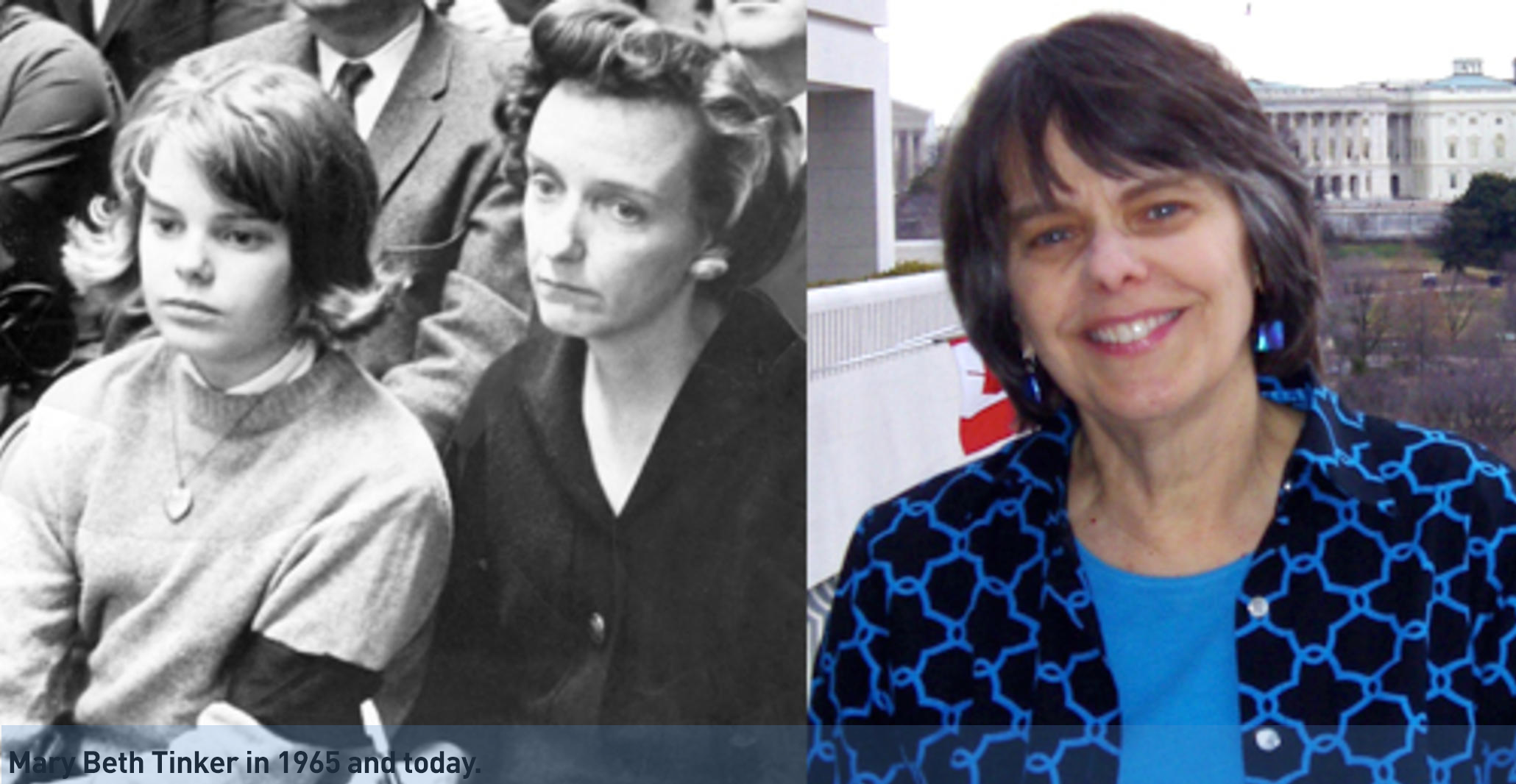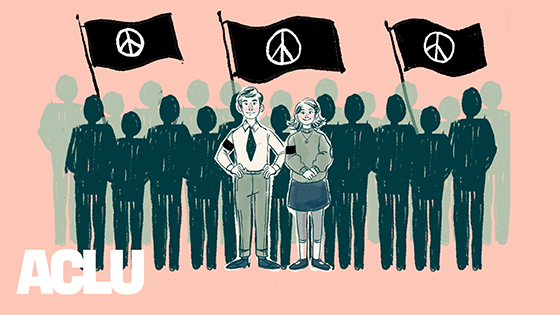How Does Judicial Review Apply to Tinker V Des Moines

Tinker v. Des Moines is a historic Supreme Court ruling from 1969 that cemented students' rights to free speech in public schools.
Mary Beth Tinker was a 13-yr-old junior high school student in December 1965 when she and a grouping of students decided to wear blackness armbands to schoolhouse to protest the war in Vietnam. The schoolhouse board got wind of the protest and passed a preemptive ban. When Mary Beth arrived at school on December. sixteen, she was asked to remove the armband and was then suspended.
Four other students were suspended as well, including her brother John Tinker and Chris Eckhardt. The students were told they could not return to school until they agreed to remove their armbands. The students returned subsequently the Christmas suspension without armbands, just in protest, they wore black clothing for the remainder of the school year — and filed a Outset Subpoena lawsuit.
Represented by the ACLU, the students and their families embarked on a four-year courtroom battle that culminated in the landmark Supreme Court conclusion. Dan Johnston, a immature lawyer also from Des Moines and but out of law school, argued the example.
On Feb. 24, 1969, the courtroom ruled seven-2 that students do non "shed their constitutional rights to freedom of speech or expression at the schoolhouse gate."
The court found that the First Amendment practical to public schools, and school officials could non censor student speech unless it disrupted the educational procedure. Because wearing a black armband was not confusing, the court held that the First Amendment protected the correct of students to wear them.
Learn more about Students' Gratuitous Voice communication Rights
The court's majority opinion, written past Justice Abe Fortas, went on to assert the freedom that young people have under the Constitution:
In our system, state-operated schools may not be enclaves of totalitarianism. School officials practice not possess accented authority over their students. Students… are possessed of fundamental rights which the State must respect, just as they themselves must respect their obligations to the State. In our organization, students may not be regarded as closed-circuit recipients of simply that which the State chooses to communicate. They may not be confined to the expression of those sentiments that are officially approved. In the absence of a specific showing of constitutionally valid reasons to regulate their speech, students are entitled to freedom of expression of their views.
There are yet limits on what students can do in public schools. Under the ruling, students tin't violate rules that aren't targeted at expression — like attendance policies — as long as their school is applying the rules equally, regardless of whether students take broken them to protest or for other reasons. And students can't "materially disrupt" the functioning of their school, though what's considered disruptive tin can depend on the situation.
SINCE Then
Tinker v. Des Moines Contained Community School Commune remains a frequently cited Supreme Court precedent. Thanks to the ruling, over the years the ACLU has successfully dedicated the correct of students to wear an anti-abortion armband, a pro-LGBT T-shirt, and shirts critical of political figures.
Social media has provided even more opportunities for students to make their voices heard — although some schools have attempted to extend their ability to punish students for speaking off-campus and outside school hours. While courts accept differed on the constitutionality of those punishments, the ACLU has challenged such overreach.
Since the landmark decision in Tinker 5. Des Moines, students have protested everything from apartheid in South Africa to a ban on dancing. Students with Black Lives Affair have inspired countless immature people and adults past standing upwards for racial justice. And there were 2018'south massive student protests that followed the shooting massacre at Marjory Stoneman Douglas High School in Parkland, Florida.
Mary Beth Tinker earned master's degrees in public health and nursing and had a long career equally a nurse. She continues to educate immature people virtually their rights, speaking frequently to student groups beyond the country. In 2006, as a tribute to her devotion to the rights of immature people, the ACLU National Board of Directors' Youth Affairs Committee renamed its annual youth affairs award every bit the "Mary Beth Tinker Youth Involvement Award."
LEARN More
Mary Beth and John Tinker Write Most Their Journey to the Supreme Courtroom — and What It Means Today
Know Your Rights: Q&A on Students and Free Spoken communication
Total Text of Supreme Court Opinion in Tinker v. Des Moines
Source: https://www.aclu.org/other/tinker-v-des-moines-landmark-supreme-court-ruling-behalf-student-expression


0 Response to "How Does Judicial Review Apply to Tinker V Des Moines"
Post a Comment